Contents
- 1 Herbs for Medicinal Uses: Herbal Teas
- 1.1 Infusion
- 1.2 Preparation Technique
- 1.3 Conservation of Infusions
- 1.4 Decoction
- 1.5 Decoction Technique
- 1.6 Conservation of Decoctions
- 1.7 Cold Extract
- 1.8 Cold Extract Technique
- 1.9 Preservation of Cold Extract
- 1.10 Dosage of Herbal Teas
- 1.11 Child Dosage
- 1.12 When and How to Sweeten Herbal Teas
- 1.13 One Plant or Several Plants in Our Herbal Teas?
- 1.14 Other Methods of Preparation
- 2 Herbs for Medicinal Uses: Juices
- 3 Herbs for Medicinal Uses: Powder
- 4 Herbs for Medicinal Uses: Syrups
- 5 Herbs for Medicinal Uses: Liniments
- 6 Herbs for Medicinal Uses: Extracts
- 7 Herbs for Medicinal Uses: Tinctures
- 8 Herbs for Medicinal Uses: Ointments
- 9 Herbs for Medicinal Uses: Baths
- 10 Herbs for Medicinal Uses: Hip Baths or Sitz Baths
- 11 Herbs for Medicinal Uses: Foot Baths
- 12 Herbs for Medicinal Uses: Hand Baths
- 13 Herbs for Medicinal Uses: Cataplasms or Poultices
- 14 Herbs for Medicinal Uses: Compresses
- 15 Herbs for Medicinal Uses: Fomentations
- 16 Herbs for Medicinal Uses: Lotions and Friction
- 17 Herbs for Medicinal Uses: Steam Baths
- 18 Herbs for Medicinal Uses: Gargles
- 19 Herbs for Medicinal Uses: Mouth Washing
- 20 Herbs for Medicinal Uses: Eye drops
- 21 Herbs for Medicinal Uses: Eye Baths
- 22 Herbs for Medicinal Uses: Enemas
- 23 Herbs for Medicinal Uses: Vaginal Irrigation
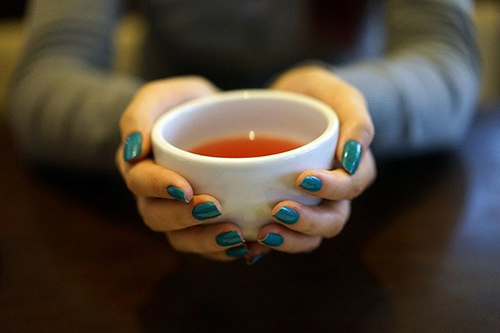
There are plenty of different ways of preparing herbs for medicinal uses. All these methods aim:
- To make the administration of the plant easier.
- Due to its physical-chemical properties, a specific preparation method can increase the concentration of any plant’s active component, which dissolves more easily. For instance, steam distillation is used to extract and concentrate essential oils.
- To favor the preservation of the plant or its preparations. For instance, decoctions (extracts from boiling) are more stable than fresh juices and even infusions, given that the liquid boils and sterilizes during decoctions.
There are specific optimum methods of preparation and use for each medicinal plant. Knowing what these methods are and how to apply them is worth knowing so that the properties of each plant are appropriately applied.
Herbs for Medicinal Uses: Herbal Teas
Herbal teas are obtained by treating vegetable products with water. This is the most popular method used to prepare medicinal herbs. Water is ideal for extracting most chemical substances produced by plants because it is a universal dissolvent. Herbal teas are primarily used for oral intake; however, some other uses include compresses, eye drops, lotions, etc.
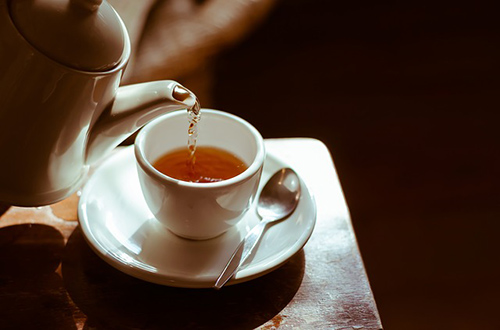
Herbal teas result from the action of water on vegetable products, depending on the method used. There are three ways to obtain herbal tea: infusion, decoction, and cold extract. With all three, the first step is to:
- Weigh or measure the adequate amount of vegetal product to be used.
- Grind or chop the parts of the plant to be used. “Gathering and preservation,” the plants must be stored unground until they are to be used. This way, the herb will better keep its properties.
Infusion
Infusion is the ideal procedure to obtain herbal teas from the delicate parts of plants: flowers, leaves, clusters, and stem buds. Many active substances are extracted with almost no alteration of their chemical structure with infusions, thus preserving nearly all their properties.
Preparation Technique
- Placing: Put the part of the plant to be used (flowers, leaves, etc.) into a glass, clay, or china container that is heat resistant. The plant may be put directly inside the container or into a tea strainer, then inside the container.
- Blanching: Pour almost enough boiling water over the plants to adequately cover them.
- Extracting: Cover the container and wait for some time to let the extraction and dissolution of the active principles occur. Five to ten minutes is usually enough. The harder and thicker the parts of the plant are, the more time the extraction will take.
- Straining: Filter the liquid by pouring the infusion through a strainer. If the plant has been put into a tea strainer, remove the latter while pouring the liquid out.
Conservation of Infusions
As a rule, infusions may be preserved for about twelve hours. Prepare them in the morning, and drink them during the day. If the weather is hot, keep infusions in the refrigerator. They may be warmed but not boiled again. Infusions prepared 24 hours before should not be consumed.
Decoction
Decoction is mainly used to prepare herbal teas from the hard parts of plants (roots, rhizome, seeds), which require sustained boiling to liberate their active principles. Decoction has a disadvantage: some of the active principles may degrade because of the prolonged action of the heat.
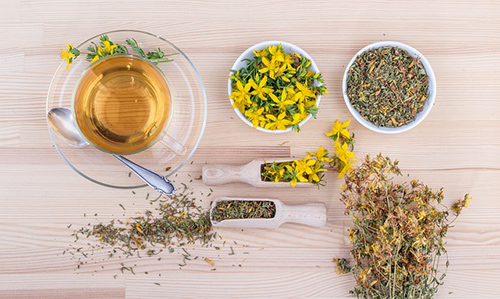
Decoction Technique
A decoction should be prepared in this way:
- Placing: Put the product to be used in an adequate container, along with the required amount of water.
- Cooking: Boil from three to 15 minutes on low heat.
- Steep for some minutes.
- Filter through a strainer.
Conservation of Decoctions
After boiling, decoctions may be preserved longer than infusions, especially when kept in the refrigerator. They may be used for several days, though keeping them for more than one week is better.
Cold Extract
The cold extract method is used to extract the active principles of a plant or part of it by using water at room temperature as a dissolvent (other applicable dissolvents are alcohol or oil). The cold extract consists of soaking the parts of the plant after it has been ground. This method is the most suitable for the following cases:
- Plants whose active principles degrade with heat.
- Plants with high amounts of tannin. When taken orally, an excess of tannin gives infusion a sour, bitter, or rough taste. The cold extract is advantageous because it releases most of the plant’s active components but not the tannin.
Cold Extract Technique
A cold extract is prepared according to the following steps:
- Place the parts to be used with the required proportion of water (at room temperature) in an opaque container.
- Steep in a cool, shady place. Stir occasionally.
- When the plant parts are soft (flowers, leaves, etc.), steep for 12 hours, when they are hard (roots, barks, seeds), they will need steeping for 24 hours. More extended periods promote fermentation or moldiness.
- Filter through a strainer.
- The resulting liquid may be considerably warmed before drinking.
Preservation of Cold Extract
Cold extracts may be preserved for up to one month, especially when the dissolvent is alcohol or oil instead of water.
Dosage of Herbal Teas
| Volume | Dry flowers or leaves* | Dry roots or rhizome* |
| One teaspoon = 5 ml | 1 g | 3 g |
| Two teaspoons = 10 ml | 2 g | 5 g |
| One tablespoon = 15 ml | 4 g | 10 g |
| A pinch = 2 ml | 0.5 g | 1.5 g |
| A handful = 20 ml | 5 g | 12 g |
As a rule, medicinal herbs do not require as strict a dosage as medicines. Due to the wide tolerance range for most of them, there is no need to measure with absolute precision the weight of the plant for a herbal tea, nor the volume of it to be drunk.
In the detailed analysis of each plant, we detail its doses. However, the usual rule establishes that for an adult person, the doses are as follows:
- Infusions: 20 to 30 grams of dry plant per liter of water, approximately equal to a teaspoon (2 g) per cup of water (150 ml).
- Decoctions and cold extracts: 30 to 50 grams per liter of water.
For an adult, it is usual to drink from three to five teacups daily (150 ml each). On this website, unless indicating another rule, the amounts we give always refer to dry plants. When fresh plants are used, the amounts must be three or four times more to obtain the same effects as the dry plant.
Child Dosage
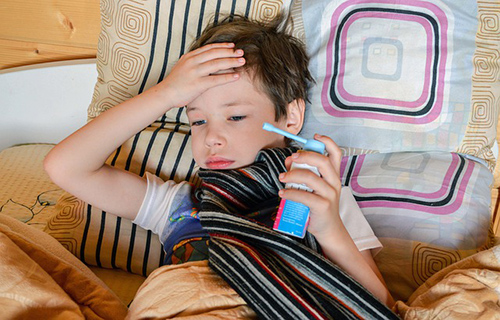
Herbal teas for children are less concentrated (with fewer herbs) or are prepared with the same concentration, but the children are given a smaller quantity of herbal tea. Child dosage is reduced proportionally, depending on the child’s age.
- School-age (6 to 12 years): half an adult dose.
- Pre-school age (2 to 6 years) a third of an adult dose.
- Children up to 2 years old: from a quarter to one-eight of an adult dose.
Only plants devoid of any toxic effect should be administered to children.
When and How to Sweeten Herbal Teas
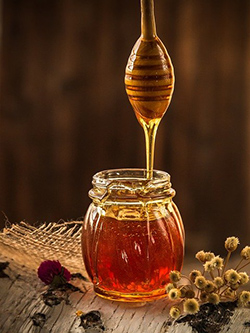
It is better to drink herbal teas unsweetened. However, some cases may require the drink to be sweetened.
- When plants have an unpleasant flavor.
- When children drink herbal teas, with the exception made for those with vermifuge effects (expulsion of intestinal parasites), in this case, sweetening of the herbal tea is not recommended because sugar and honey promote the growth of parasites.
- When herbal teas are administered to recuperating or weak patients.
Those herbal teas with an appetizing effect should not be sweetened because sugars may diminish the sensation of hunger. Also, diabetic people should abstain from adding sugar to herbal teas and use artificial sweeteners instead.
Honey is the ideal product to sweeten herbal teas. It comes from flowers, and besides sugars, it contains minerals and vitamins with a high nutritional value. Honey may be substituted by brown sugar, molasses (sugar cane honey), or maple syrup, which are also rich in minerals and vitamins, and have better properties than refined sugar.
A few drops of lemon juice or a piece of lemon rind can also give herbal teas a better flavor. Why not try, by any means, to make our medicine more appealing?
One Plant or Several Plants in Our Herbal Teas?
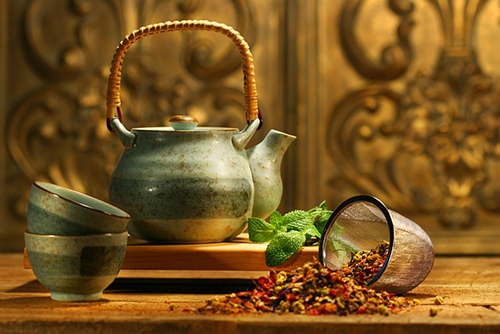
According to their chemical composition and properties, a mixture of several kinds of plants in the same herbal tea may have positive effects if they are well combined. However, when the mixture is not well combined, medicinal effects may disappear.
With the mixture of several plants, possible undesirable effects of each can occur (awful taste, digestive intolerance). However, it is not always necessary to mix plants. One plant, when well applied, may exert better effects than the mixture of several poorly combined ones.
Other Methods of Preparation
Besides simple herbal teas, other methods of preparing medicinal herbs demand specialized knowledge and instruments used in the pharmaceutical industry. These are the so-called “galenic preparations,” in honor of Galen, the Greek physician of the second century B.C. They are also called “officinal preparations” because they are prepared in pharmacies.
However, some of these preparation methods may also be made at home, such as syrups or juices. The following are the most commonly used methods of preparation in phytotherapy.
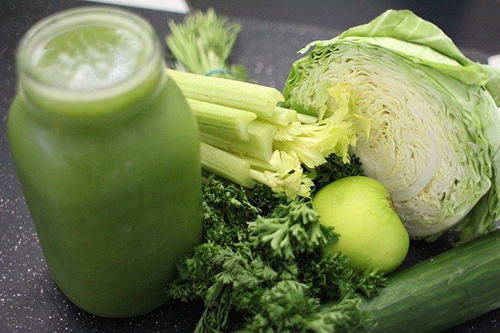
Herbs for Medicinal Uses: Juices
Juices must be made from fresh plants by mashing them in a mortar and then filtering them soon after they are picked. They may also be made using an electric blender. Juices may be obtained either from herbaceous plants or from leaves and fruits. The juice of aloe leaves is highly appreciated due to its appetizing and digestive properties.
Juices contain all undegraded active components, especially vitamins. They must be drunk in small doses and teaspoonfuls because they may be too intense for delicate stomachs. You may need to dilute them with water. Many juices serve as a syrup base. Plants that should only be ingested when dry should never be consumed as juice.
Herbs for Medicinal Uses: Powder
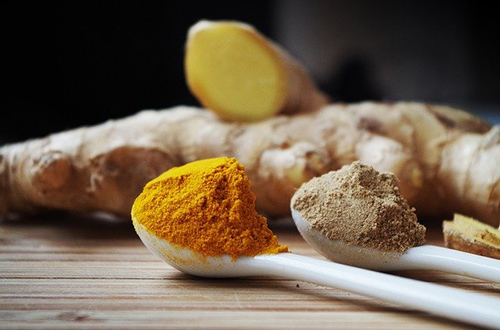
To obtain powder for medicinal use, the parts of the plant should be dried for longer than usual and then be finely ground. Medicinal powder may be obtained from a plant’s leaves (for example, the foxglove plant or tinnevelly senna), from their flower clusters (for example, hops, wormwood), from the bark (for example, cascara sagrada, willow), from the fruits (coriander), and particularly from the roots (ginseng, devil’s claw, jalap, senega snakeroot, and violet). Powder offers the following advantages.
- It takes maximum advantage of the plant’s active components, especially from the hard parts, such as roots.
- Powder allows a more exact dosage when using potentially toxic plants (for example, foxglove, rauwolfia), which must be used in minimal amounts, a few grams or even milligrams.
Ways to administer powder
- As an infusion (for instance, cinnamon, ginseng, oats, tinnevelly senna), dissolving it in hot water.
- Sniffing it (asarum, betony), or as a hemostatic, against nose bleeding (grapevine leaves).
- Mixed with honey, forming a paste (lavender cotton, wormwood, coriander).
- Mixed with oil for external emollient application (the seeds of annatto).
Herbs for Medicinal Uses: Syrups
Syrups are concentrated dissolutions of sugar and juice or other parts of the plant. Their advantage is that they mask the terrible taste of many plants, thus easing their intake. They are beneficial for children.
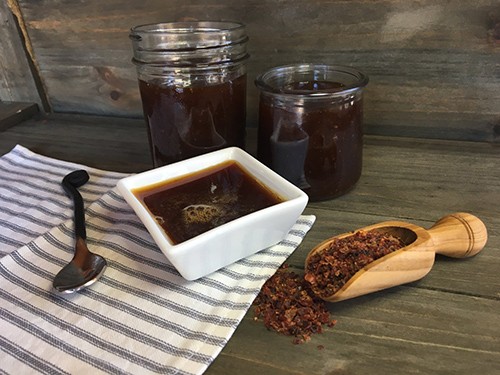
Whenever possible, syrups must be prepared with honey, thus adding the respiratory and stimulating properties of the latter to those of the plant. Brown sugar may also be employed. To prepare syrups, the mixture must be cooked over low heat to slow the dissolution of sugars.
Most syrups are used for respiratory diseases (for instance, poppy onion, ipecacuanha, the black elder, violet). Those made of fruit have invigorating and refreshing and vitaminic properties and contain vitamins (for instance, barberry, garden raspberry, red currant, and bramble). People with diabetes should abstain from taking syrups due to their high sugar content.
Herbs for Medicinal Uses: Liniments
Liniments are an emulsion (mixture) of medicinal herb extracts with oil and/or alcohol. They have a soft consistency and are applied to the skin by gentle rubbing. The active substances penetrate through the skin into deeper tissues. Liniments are used mainly for rheumatic and muscular symptoms.
Herbs for Medicinal Uses: Extracts
Extracts are obtained employing a dissolvent applied to the active parts of the plant. The solvent is finally evaporated, and only the active components remain. The most usual dissolvents are ethyl alcohol, propyleneglycol, ether, glycerine, certain oils, and water.
Types of Extracts
The liquids extracted have varying degrees of consistency, resulting in different types of extracts.
- Liquid extracts: These have the consistency of a slightly thick liquid.
- Fluid extracts: These have the consistency of honey. They are the most commonly used due to their ease of use and their exemplary conservation. With liquid extracts, the weight of the product obtained is equal to that of dry plants employed to obtain the extract.
- Soft extracts: With a creamy consistency, similar to that of butter. They contain a maximum of 20% of water.
- Dry extracts: These extracts may be a powder, with a maximum water content of 5%. Their advantage is their high concentration of active elements (1 g of dry extract equals 5 g of plant).
- Atomized extracts: One of the most modern techniques used to obtain extracts. It consists of atomizing or nebulizing the extractive solution, then using hot air to evaporate the solvent.
Herbs for Medicinal Uses: Tinctures

Tinctures are alcoholic solutions that contain a high concentration of specific components of the plant, precisely those which are alcohol-soluble. Tinctures are prepared by putting a well-dried, ground plant in alcohol at room temperature for two or three days, or even up to 15 days, such as in the case of arnica.
There are two reasons why tinctures must be used with caution.
- Their high concentration of certain active ingredients. Thus, the prescribed dose must never be exceeded. This dose usually ranges from 15 to 25 drops (from three to seven for children) diluted in water three times a day.
- Their alcoholic content: Though the amount of alcohol intake when consuming some tincture drops is not very high, it may be enough to cause sensitive people to suffer from digestive intolerance. Tinctures are forbidden for people suffering from liver dysfunction.
As a general rule, we recommend tinctures to be administered only to patients suffering from certain diseases and always under medical control and prescription. Tinctures must never be administered to children. Their most recommended use is external applications, such as monkshood, arnica, hemp, or rosemary.
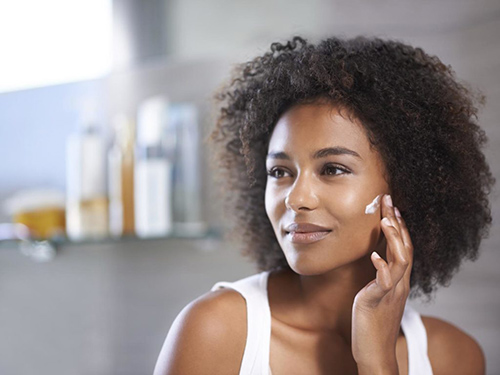
Herbs for Medicinal Uses: Ointments
In ointments, the active elements are dissolved in a fatty substance. The most traditionally used fats are Vaseline, oil, lanolin, or animal fats. Ointments are solid at room temperature and soften when rubbed on the skin. Creams are prepared with other fatty substances currently produced by pharmaceutical companies.
The poplar ointment, which is extracted from the young buds of black poplar, produces sound effects against hemorrhoids. Ointments of henbane and monkshood, which are toxic when taken orally, have been used for centuries as calming substances for neuralgia, sciatica, and persistent aches.
Methods of Use
When applying a plant or any plant-based preparations, there are two methods to consider:
- Internal use: The substance is taken through the mouth, entering the stomach, and then the digestive system. From there, these substances exert their action, whether absorbed and passing into the blood system or by acting directly on the digestive system (such as bran or the mucilaginous substances of some plants). Herbal teas (infusions, decoctions, cold extracts), oils, syrups, juices, powders, tinctures, and other galenic pharmaceutical preparations are employed internally.
- External use: The plant or its preparations are applied on the skin or in the person’s orifices (mouth, ears, vagina, etc.), not entering the digestive system.
The same herbal teas, juices, oils, and other internal preparations may also be used externally, though it is better if they are more concentrated. A factor to consider is that many active substances of plants may also be absorbed through the skin when applied externally, passing them to the blood. Thus, potentially toxic plants must be spread with caution, even when used externally, specifically with creams and ointments made from monkshood, henbane, hemp, and poison parsley, which have been used from ancient times to ease neuralgia and rheumatic aches.
Baths, enemas, fomentations, steam inhalations, and other hydrotherapeutic applications have curative effects on their own, even when employed only with water. When taken with herbal tea or other plant preparation, the medicinal effects combined with water are thus more effective.
Herbs for Medicinal Uses: Baths
A bath is the complete or partial immersion of the body in water, to which preparations of medicinal plants may be added. Examples are:
- Concentrated infusions or decoctions: An infusion or decoction to be added in bathwater may be prepared with 40 to 80 g of the plant (two or three big handfuls) per liter of water. For a standard bathtub, two or three liters of infusion or decoction are usually enough. Once strained, they are added to the water in the bathtub.
- Essences: Five to ten drops of essence dissolved in the bathwater are typically sufficient. Baths are primarily used for their antirheumatic, relaxing, and sedative effects (for example, lavender cotton, sweet flag, lavender, marjoram, or wild clover). A bath with the sweet flag is especially effective against insomnia.
Herbs for Medicinal Uses: Hip Baths or Sitz Baths
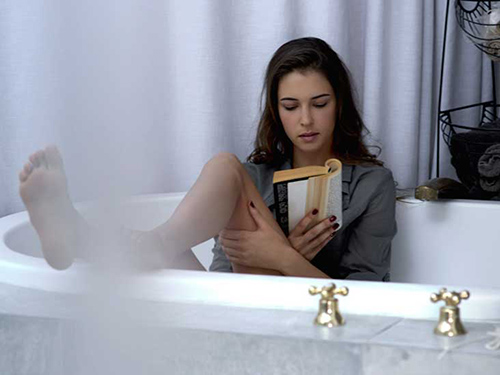
For sitz baths with medicinal plants, one or two liters of infusion or decoction are prepared (generally more concentrated than those employed in internal use) and poured into the bathtub, adding the required amount of water to reach the hips, under the navel.
The legs and the upper half of the body must not touch the water. The ideal way is to take hip baths in a special basin designed for sitz baths, though they may also be taken in a bidet, in a wide washbowl, or sitting in the bathtub with the knees high and flexed. While having the bath, the hypogastrium (the groin area) should be softly rubbed with a sponge or cotton cloth.
Hip baths produce a circulatory stimulation in the lower part of the abdomen and have favorable effects on the organs of the area: large intestine, bladder, and internal genital organs. Moreover, hip baths act directly on the skin and the external tissues of the genital organs and the anus. They are pretty effective in the following cases:
- Anal and rectal disorders, such as hemorrhoids or anal fissures.
- Cystitis and urinary infections.
- Prostate disorders.
- Gynecological disorders, especially painful menstruations and female genital infections.
Hip baths are taken with warm or cold water unless contraindicated to achieve a more stimulating effect. Nevertheless, in some cases, the water should be hot:
- Abdominal spasms caused, for instance, by digestive colics, cystitis, or dysmenorrhea (painful menstruation).
- Anal fissure: An affliction whose symptoms are small tears or ulcerations in the anal tissues, which causes painful defecations along with minor bleeding. This should not be confused with hemorrhoids. Hot hip baths should be taken when there is a fissure, while hemorrhoids require cold hip baths.
A hip bath must not last for more than three minutes if taken with cold water, while when taken with warm or hot water, it may last 10 minutes. It is usual to have one or two baths daily, and even three, changing the water each time.
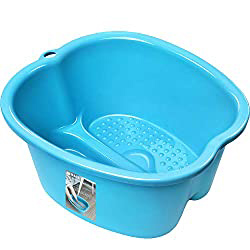
Herbs for Medicinal Uses: Foot Baths
Foot baths, taken with hot water, are useful for alleviating headaches (especially when mustard flour is added to the water) and improving the legs’ blood flow (with grapevine or blind nettle leaves, for instance). They are usually taken by adding one liter of the same infusion or decoction employed for internal use, to 3 or 5 liters of water.
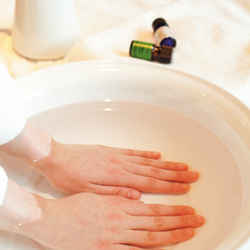
Herbs for Medicinal Uses: Hand Baths
Hand baths are successfully used to improve blood circulation in the upper limbs. They must be taken with warm or slightly hot water. Hand baths with ginkgo are recommended to prevent itching, swelling, and cold and blue hands caused by arterial spasms.
Herbs for Medicinal Uses: Cataplasms or Poultices
Poultices are prepared in several ways.
- With seed flour (flax, mustard, fenugreek). Knead the flour with water until a fluid, uniform paste is formed. This done, warm it in a conditioner, continuously stirring, until it acquires a pasty consistency. Apply a coat, one or two centimeters thick, on the skin, and cover with a cotton or flannel cloth.
- With ground leaves or roots from fresh plants (burdock, watercress, onion, cabbage, comfrey). They are ground until a uniform paste is obtained, then spread on a cloth and applied hot or cold as required.
- With fruits (strawberries, figs), mashed and wrapped with a cloth.
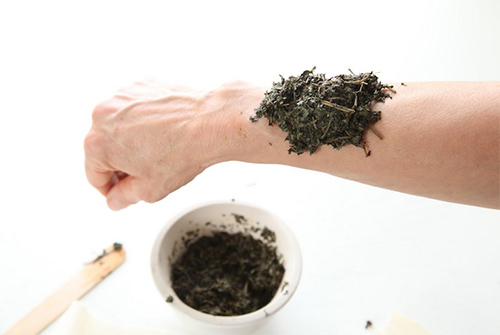
Use of Poultices
Cataplasams or poultices, in contact with the skin for long periods, reinforce several properties of the plant, such as the following:
- Cicatrizant promotes healing (sorrel, burdock, cabbage, comfrey, figs, common plantain).
- Resolvent softens and encourages drainage of abscesses and furuncles (avocado, fenugreek, borage, flax, cassava).
- Analgesic and sedatives, against abdominal pain, cystitis, menstrual pain, etc. (corn grains, flax, thyme).
- Pectoral and anti-inflammatory: The best compresses are those prepared with linseed flour (flax seeds). Some mustard may be added to these to produce a revulsive effect.
- Revulsive: Those which attract blood to the skin, relieving the congestion of internal organs. These are usually prescribed for rheumatic affections and prepared with cowslip, nettles, mustard, or rue.
Methods of Application of Poultices
When applying poultices, some points should be considered:
- Temperature: Poultices are applied warm or hot, between 40 degrees and 50 degrees Celsius (100-120 degrees Fahrenheit). A practical method to warm them is to put them under an iron for some minutes, wrapped in a cloth.
- Skin protection: Poultices with a revulsive effect, especially those containing mustard flour, called sinapisms, may provoke skin irritation. They must thus be carefully wrapped in a flannel cloth. It is sufficient to wrap other poultices in a gauze.
- Duration: From five to ten minutes. It is best to apply a poultice several times a day instead of once for long periods.
Herbs for Medicinal Uses: Compresses
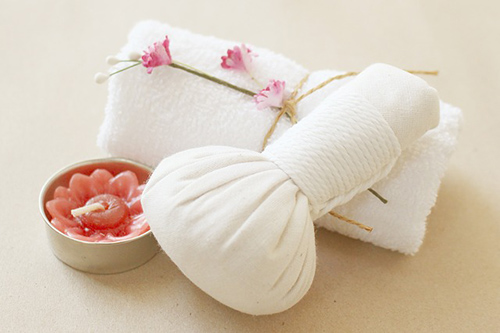
Compresses are easier to use than cataplasms, though their effects are less intense.
Application of Compresses
Compresses are applied in the following way.
- Soak a gauze or flannel cloth in herbal tea, juice, tincture, or other liquid preparation.
- Apply it on the affected skin area for some time, depending on the plant used (generally from five to 10 minutes).
- If the gauze or cloth dries, soak it again. It is better to frequently change compresses and apply them several times a day rather than use the same one for a long time.
Some plants may stain skin when applied in compresses, especially those plants which contain tannins (English oak, English walnut, black alder). Rubbing with lemon juice will help to recover the normal skin color.
Use of Compresses
Compresses are used as cicatrizants and antiseptics on wounds and skin ulcers (sticklewort, black alder, hazelnut, calendula, nasturtium, onion, cabbage, horsetail, ivy, English walnut, licorice, English oak) to make skin more beautiful (strawberry, witch hazel, rose, linden), for the eyes (cornflower, chamomile), or as analgesics and sedatives (oats, European mistletoe).
Herbs for Medicinal Uses: Fomentations
Fomentations are applied in the same way as compresses, but the liquid must be as hot as the skin can resist. Two more cloths are used apart from the one soaked in the medicinal infusion or decoction: a dry one under it to protect the skin and another over it to maintain the heat.
Fomentations are mainly used in respiratory diseases (catarrhs and bronchitis), throat and trachea inflammations, colic spasms (kidneys, liver, and intestine), and sciatica. In these cases, they are applied using the same herbal tea used internally, reinforcing its action.
Herbs for Medicinal Uses: Lotions and Friction
Lotions are applied using an infusion, decoction, cold extract, or juice, which is applied through a gentle massage over the skin. Friction is applied in the same way, usually employing essential oils and with a more vigorous massage. They can be applied with bare hands or with a soft cloth soaked in the liquid.
Use of Lotions and Frictions
Lotions and frictions may be used for the following:
- Skin afflictions (for example, bilberries, calendula, bennet, echinacea, olive leaves, nettle, pansy, soapwort, thyme, or coltsfoot).
- Pruritus, itching (borage, black nightshade, speedwell).
- Beauty: Eliminating cellulitis, making skin more beautiful, or encouraging weight loss (strawberry, echinacea, rose, kneeholly).
- Rheumatism (lavender, laurel).
- Mosquito repellent (wormwood).
Herbs for Medicinal Uses: Steam Baths
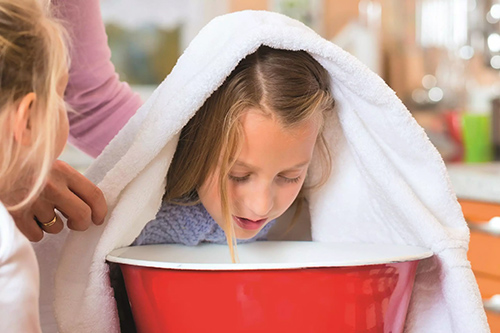
Steam baths are applied to the head, torso, or whole body. Steam baths are used in the following ways:
- Place a bowl of boiling water containing the plants on a stool. The bowl must be covered. Two or three drops of essential oil may be added to the water instead of plants.
- The patient sits on a chair with his head over the bowl and covers his head with a large towel or a sheet to keep the steam from escaping.
- Partially uncover the bowl to let steam out.
- The application takes 10 to 15 minutes or until no steam is left.
- Finnish with friction of cold water or alcohol on the area exposed to the steam.
Use of Steam Baths
Steam baths are beneficial for respiratory diseases, including sinusitis, pharyngitis, laryngitis, tracheitis, bronchial catarrhs, and bronchitis, and otitis (infection or inflammation of the ear). They facilitate the elimination of mucus, germs, and cellular waste from the respiratory mucosa, thus accelerating the regeneration and healing.

Herbs for Medicinal Uses: Gargles
Gargles are an easy way to apply medicinal plants to the throat. Gargles are done this way:
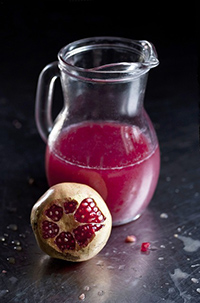
- Sip (but do not swallow) some warm herbal tea (generally an infusion). Very hot or very concentrated liquids must not be taken.
- Lean your head backward.
- Try to pronounce the letter “o” for half to one minute.
- Spit out the liquid. It must never be swallowed, as it is supposed to absorb the waste substances.
- Repeat the whole process for five to ten minutes.
Use of Gargles
Gargles act on mucus, covering the rear part of the mouth, the throat, and the tonsils. They remove mucous, germs, dead cells, and toxins in these areas in cases of irritation, inflammation, or infection. They also have soothing, antiseptic, and astringent healing effects.
The plants most used for gargles are black alder, bistort, bennet, chestnut bark and leaves, onion, five-finer grass, white dryas, blackthorn, willowherb, strawberry, restharrow, pomegranate, goldenseal, common plantain, English walnut, rhatany, rosemary, black elder, tormentil, and vervain.
Herbs for Medicinal Uses: Mouth Washing
Mouthwashing involves siping liquid (generally an infusion or decoction) and rinsing the mouth. It is beneficial in stomatitis, gingivitis, pyorrhea, and other mouth-tooth afflictions. The same plants are used for mouthwashes.
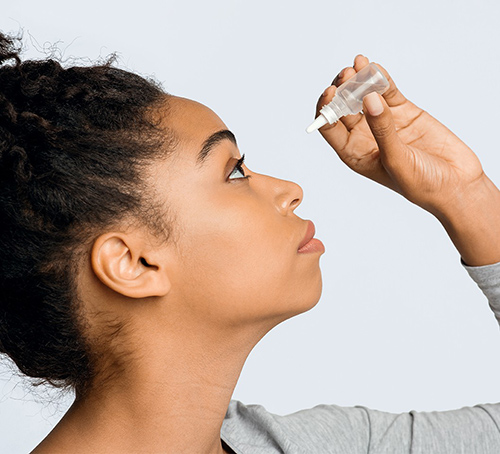
Herbs for Medicinal Uses: Eye drops
Eye drops are liquids employed to heal eye or eyelid affections. They must not be too concentrated or irritating and should be applied warmly. To achieve better sterilization, eye drops should come from infusions made with water previously boiled for five minutes or with decoctions. Eye drops made with cornflower, motherwort, red eyebright, chamomile, and grape leaves are frequently used.
Herbs for Medicinal Uses: Eye Baths
Eye bathing is done by soaking a compress in plant decoction and gently dripping the liquid from the temple to the nose. As with eye drops, it is recommended to ensure good liquid sterilization to wash the eyes, preferably decoctions. Five minutes of boiling are enough to obtain adequate sterilization for decoctions and infusions.
Herbs for Medicinal Uses: Enemas
Enemas are the introduction of a liquid into the large intestine through the anus through a rubber irrigator. The liquid may be a low-concentrated infusion, or decoction warmed to body temperature (98.6°F).
Caution in The Use of Enemas
When giving an enema, some points should be adhered to:
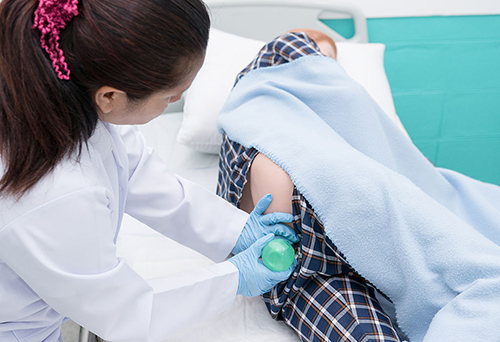
- Lay the patient down on their right side, with their legs bent inwards.
- Introduce the tip of the irrigator with the help of oil or Vaseline.
- Avoid the liquid entering with excessive pressure. The recipient containing the liquid must not be held more than one meter above the patient’s body.
- Three hundred to 500 ml of liquid is enough for adults. For children, 100-200 ml suffice.
- The patient must retain the liquid for five to ten minutes.
- Do not apply more than three enemas daily, which should be administered after meals.
- In many cases, a prescription and the supervision of a physician are required.
Aims of Enemas
The aims of enemas are:
- To evacuate the rectum and the large intestine in cases of constipation, primarily due to fever or infectious afflictions (for example, with olive leaves, high mallow, or tinnevelly senna).
- To reduce inflammation of the anus and rectum in the case of fissures, hemorrhoids, and anal inflammation (with common plantain, English oak, or psyllium).
- To reduce inflammation of the large intestine in cases of colitis or diarrhea (horseweed, high mallow), digestive spasms (asafetida), breastfeeding babies, and diarrhea (loosestrife).
- To eliminate intestinal parasites (garlic, quassia, tansy).
Herbs for Medicinal Uses: Vaginal Irrigation
Vaginal irrigation introduces low-concentrated infusions or decoctions at body temperature (98.6°F) inside the vagina, utilizing a special irrigator or cannula.
The most commonly used plants for this kind of irrigation are bistort, five-finger grass, pomegranate, high mallow, Lady’s mantle, great burnet, rhatany, rose, loosestrife, sage, and white willow. They are used in cases of vaginitis and leucorrhea (excessive menstrual fluids). Pregnant women should avoid any vaginal irrigation. When applying vaginal irrigation, low pressure must be exerted to prevent the liquid from ascending to the uterus, whose cavity is usually closed by the cervix. It is recommended that vaginal irrigation be applied under medical supervision.
DISCLAIMER: All content on this website is presented solely for educational and informational objectives. Do not rely on the information provided as a replacement for advice, diagnosis, or treatment from a qualified medical expert. If you are pregnant, nursing, or have any preexisting medical concerns, talk to your doctor before using any herbal or natural medicines.
REFERENCES
- George D. Pamplona-Roger, M.D. “Encyclopedia of Medicinal Plants.” George D. Pamplona-Roger, M.D. Encyclopedia of Medicinal Plants. Ed. Francesc X. Gelabert. Vols. 1 San Fernando de Henares: Editorial Safeliz, 2000. 54, 56, 57, 58, 59, 60, 61, 63, 64, 65, 66, 67, 68, 70, 71, 72, 73. Print. [herbs for medicinal uses]
- Food and Drug Administration (FDA): https://www.fda.gov/food/dietary-supplements
- University of Rochester Medical Center: https://www.urmc.rochester.edu/encyclopedia/content.aspx?contenttypeid=1&contentid=1169
